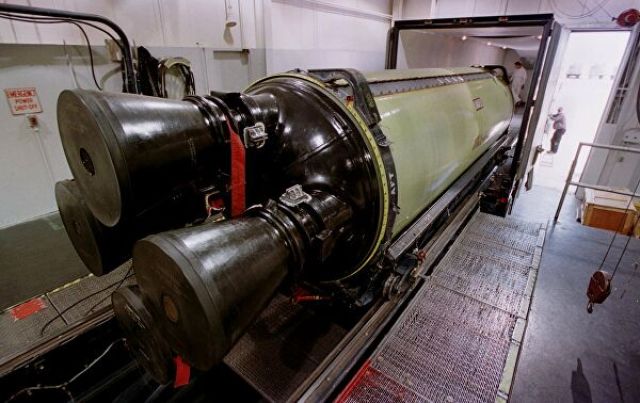TSAMTO, May 24. The Russian Foreign Ministry published data on the total number of strategic offensive weapons in Russia and the United States under the START Treaty, extended at the end of January this year for five years.
Information on the total quantities of START of Russia and the United States is provided as of March 1, 2021, based on the notifications provided for in the START Treaty, which the parties exchanged in March 2021 in accordance with paragraph 2 of Section II of Chapter Four of the Protocol to the START Treaty.
In particular, in the category of "deployed intercontinental ballistic missiles, deployed submarine-launched ballistic missiles and deployed heavy bombers": Russia has 517 units, the United States-651 units.
In the category "warheads on deployed ICBMs, warheads on deployed SLBMs and nuclear warheads counted for deployed heavy bombers": Russia-1456 units, USA-1357 units.
In the category "deployed and non-deployed ICBM launchers, deployed and non-deployed SLBM launchers, deployed and non-deployed heavy bombers": Russia-767 units, USA-800 units.
As the Russian side has repeatedly pointed out earlier, the US-declared figure of 800 deployed and non-deployed ICBM launchers, deployed and non-deployed SLBM launchers, deployed and non-deployed heavy bombers has been achieved not only through real reductions in US weapons, but also through the unilateral withdrawal of 56 Trident-II SLBM launchers and 41 B-52N heavy bombers from the Treaty. Their conversion was carried out in such a way that the Russian side cannot confirm the reduction of these strategic offensive weapons to a state unsuitable for the use of nuclear weapons, as provided for in paragraph 3 of Section I of Chapter Three of the Protocol to the Treaty.
In addition, the United States has renamed the four silo launchers intended for training into the "training silos" category not provided for by the START Treaty and refuses to include them in the Treaty as non-deployed ICBM silo launchers.
Thus, the indicator allowed in accordance with subparagraph (c) of paragraph 1 of Article II of the Treaty exceeded the United States by 101 units, the Russian Foreign Ministry said in a statement.
As RIA Novosti reminds, the START-3 Treaty, which is key for strategic stability, entered into force on February 5, 2011. The contract expired on February 5, 2021. Former US President Donald Trump declared it unprofitable for the country and insisted on a new agreement with the participation of China. The negotiations did not lead to anything, and this threatened the collapse of the entire system of strategic stability. Joe Biden, who succeeded Trump, spoke in favor of an extension without additional conditions. At the end of January, the DSNV-3 was extended for another five years.

